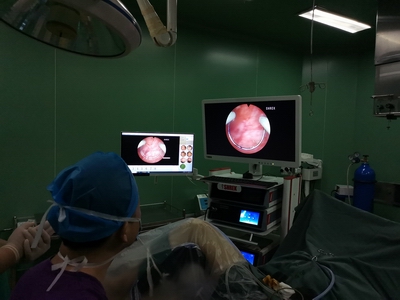Cystoscopy System: Enhancing Diagnostic Accuracy in Urology
Cystoscopy is a diagnostic procedure that enables visualization of the lower urinary tract, including the bladder and urethra. It is a common diagnostic tool used by urologists to investigate symptoms such as hematuria, bladder pain, and frequent urination. Over the years, advances in technology have led to the development of cystoscopy systems that are increasingly sophisticated and effective at visualizing the urinary tract. This essay will discuss the components and benefits of a cystoscopy system and how it is enhancing diagnostic accuracy in urology.

A cystoscopy system typically consists of a video camera, a light source, an endoscope, and a monitor. The video camera captures images of the bladder and urethra, while the light source illuminates the area for optimal visualization. The endoscope is a thin, flexible tube with a camera attached to the end that is inserted into the bladder through the urethra. The monitor displays the images in real-time, allowing the urologist to identify any abnormalities in the urinary tract.
One of the main benefits of a cystoscopy system is its ability to provide high-quality, real-time images of the urinary tract. The images produced by the camera are clear and detailed, which allows the urologist to accurately identify any abnormalities or lesions in the bladder or urethra. This level of accuracy is particularly important in diagnosing bladder cancer, which can be difficult to detect using other diagnostic methods.
Another benefit of a cystoscopy system is its ability to perform a biopsy or remove a small tissue sample for further examination. This is done using specialized instruments that are inserted through the endoscope. The ability to perform a biopsy or remove a tissue sample allows for a more accurate diagnosis and can help guide treatment decisions.
Cystoscopy systems have also become increasingly user-friendly and convenient for both patients and urologists. In the past, cystoscopy was an invasive procedure that required general anesthesia. However, advances in technology have led to the development of miniaturized endoscopes that can be used under local anesthesia. This has reduced the discomfort associated with the procedure and made it more convenient for patients.
In conclusion, a cystoscopy system is a valuable diagnostic tool in urology that allows for high-quality, real-time visualization of the urinary tract. Its ability to accurately identify abnormalities and perform biopsies or tissue sampling has enhanced diagnostic accuracy in urology. The increasing availability of user-friendly and convenient cystoscopy systems has also made the procedure more accessible and comfortable for patients.



Leave a message